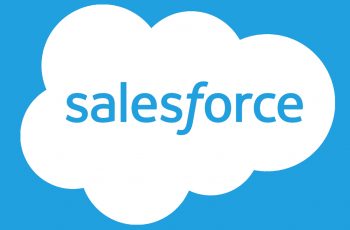If I Only Had a $1,000 Dollars
The Controversy
I recently published a post titled, So You Want to Advertise in the NH Business Review?, that appears to have sparked a little controversy in our marketing community. The basic premise of this article being, if you can’t track marketing spend to ROI of an ad in a publication, but can in other channels, why would you choose the one isn’t providing clear, and actionable results that grow your bottom line?
Comments poured in from both sides of the aisle. From those that loved the article for espousing ROI based Inbound Marketing and those that felt otherwise. I appreciate and welcome the spirited debate among our community.
The most common theme of the less positive responses to my initial article talked about the critical nature of a ‘marketing mix’, ‘delivering your marketing messages across multiple platforms’ and creating ‘multiple touches’.
While there is something to be said for these concepts, they are just that, concepts. When the rubber meets the road, the mix is less important than the effectiveness of the mix’s components. Advertising in a particular channel just because a ‘marketing mix’ is a good practice conceptually, makes very little sense. Results are what keep companies afloat.
It’s inspired me to author this follow on article exploring the concept, If I Only Had $1,000 Dollars. Because let’s face it, most NH businesses are small, and their marketing budgets are not on par with a large corporation’s. Which means a lot less room for error. Performance based, ROI driven marketing is all about maximizing spend and getting the most trackable bang for your marketing buck. And if it were my company, my family, my employees on the line, and I only had $1,000 per month to invest in marketing or go belly up, what would I do?

A Little Reality Based Exercise
Let’s pretend that you are a business owner in NH. The fate of your company, your family and your employees is all at stake, each and every day. Competition is fierce, and prospects are cutting you out of the consideration stage of the buyer’s journey. You have only $1,000 budgeted to spend per month to generate new business this year, and if you fail to drive a positive ROI, you go out of business, failing everyone involved. You need to invest this money in the place that gives you the largest amount of quality marketable data & leads, trackable to ROI, and the ability to scale the program each month to stay alive and grow. What do you do?
Advertising in a Local Print Publication
You decide to invest your $1,000 per month budget on a small ad in a local print publication. We can safely assume that of the publication’s circulation, some percentage of recipients will open it and read or scan something, a percentage of those people will end up reading or scanning the specific page with your ad, and a percentage of those people will digest your advertisement.
Our verifiable result? We can assume that we got some amount of views, generated some awareness and maybe, a lead(s). We cannot calculate how much we just spent per view etc. because we don’t know the percentages that receive, open, read your page/ad. Without that we can’t assume much down the pipeline. More importantly, we don’t know where any of the audience is in the buyer’s journey or intent that allows us to customize our messaging for maximum effectiveness. We generated no marketable data, most likely no identifiable leads, and have no real ability to scale the effort. And to boot, any benefits end soon after the next issue is released. OK.
What’s Possible with Inbound Marketing
How about we try another path? We take your $1,000 per month budget and create an attractive content piece aimed at a specific prospect persona in a particular stage of the buyer’s journey. We put out digital hooks to that content piece via PR outlets, social media and a mix of other low or no cost channels. We also optimize a page at our web site to draw organic visitors, and email an advertisement to our database of prospects. We put that content piece behind a short form requiring a name and email address so we can generate more marketable data (to market to over time) as well as leads for our sales team to contact.
Then, we take another portion of that budget and invest in a paid search strategy, targeting keywords that infer the proper intent of prospects that are in-market-now and actively searching for your product or service. We connect our ads to a well crafted landing page with a form, so even leads that we can’t contact can be marketed to (and nurtured) over time.
Finally, we put a lead nurturing process in place using email marketing tied to actions/statuses in our CRM. Leads that progress through the process are helped along, and leads that are closed-lost for recoverable reasons are put into an automated email marketing chain in an attempt to reactivate them.
Our verifiable result? We can track visitors to our content page, and marketable contacts & leads generated from our lead capture form, from the various places where we placed our digital hooks, including opens, clicks and conversions from our email campaign. The content piece and web page will live online forever, getting indexed in the search engines and generating traffic from relevant prospects, paying us off like an annuity. As well as positioning us as a thought leader in our marketplace.
Our paid search program provides us with performance data like impressions, clicks, cost & conversions and ties them to the channel so we can follow progress all the way down the pipeline to a sale and ROI. Follow on improvements can be made based on the various performance data available from the search engine (in real time) so we can generate a better ROI each week/month. There is more traffic available, and more areas we can test our way into, to scale in the coming months.
Our lead nurturing program is pushing more prospects through the pipeline faster, while triggers are making it easier for sales to facilitate the process by automating some time consuming tasks. Leads lost to reasons like ‘no contact’ or ‘out of market’ are being automatically nurtured and reactivated into our sales funnel without further effort or spend required, and our overall conversion rates are improving.
Robust and real time channel data allows us to make quick, on the fly adjustments to programs to ensure we are achieving incremental weekly improvements. Granular line of site on performance means we can identify what is working best to maximize our investment each month.
Which would you choose? For me, there is simply no comparison between what is possible between the two programs, from targeting, to marketable data, to lead flow, to sales and ROI tracking. The ability to confidently (and quickly) pull marketing levers to put us in the best position to reach our sales goals is the absolute difference maker.

The ROI Based Marketing Mix
Let’s revisit the marketing mix concept real quick. Instead of thinking about it as ‘we need to advertise in X place because we need a mix’, or ‘more touch points’, (even if you do have larger amounts of marketing dollars to invest), I challenge you to think about it a different way.
Your marketing mix must be dictated by identifying what provides the most marketable data, leads and sales. Spend every penny of your marketing budget on what works best. Yes, even if that means you only have one channel for a while. And when, and only when, you’ve maxed out spend in that channel, do you introduce another (of course you’ve saved some budget for testing into new channels along the way). Work your way down the ROI chain to provide you with your ROI based marketing mix. It might look something like the following in terms of budget allocation. (Your business will need to create your own formula to account for various factors.) This generic list considers cost, trackability, propensity to convert and increased conversion as important metrics. (for purposes of discussion)
- CRM mining of current customers using email and call campaigns to cross sell into new products and services.
- Email marketing to prospects in your CRM that showed past interest in your product or service to generate inbound leads.
- Targeting and converting in-market-now prospects via paid search marketing.
- Tying email marketing of prospects into a live contact campaign for sales so they are making dials when prospects are at their computers or on their mobile devices (increasing contact rate).
- Creating high value digital content for data gathering and lead generation via the web.
- Customizing your CRM and Marketing Automation tools to improve lead nurturing, lead management and sales.
- Engaging in relevant direct mail pieces to targeted contacts that fit your buyer personas (preferably tied to some sort of identifier of position in the buyer’s journey or trigger event).
- Anything else that generates marketable data at a minimum, preferably identifiable leads, and trackable ROI.
- Once you have scaled and exhausted all other options, spend money marketing in channels that produce no marketable data, identifiable leads or clear ROI for incremental increases in awareness.
Are there exceptions to this performance based rule? Of course. Maybe you like and want to support a local publication. Perhaps you’ve invested all possible elsewhere and the general audience fits your basic mold, or it’s a hyper targeted niche publication and you’re OK it’s not highly trackable. Like I said, I enjoy flipping through the publications myself, and believe they do provide a public service.
But in the digital era, with so much opportunity and technology available, we can no longer be just marketers. We must be lead generators, filling the pipeline for sales, and accountable for our efforts impact on the bottom line. Utilizing every marketing dollar, no matter how large our budget, as if it is our last dollar. In short, we can, and we must, be able to demonstrate positive return on investment in everything we do.
Because if it was your company, your family, your employees on the line, and you only had $1,000…





